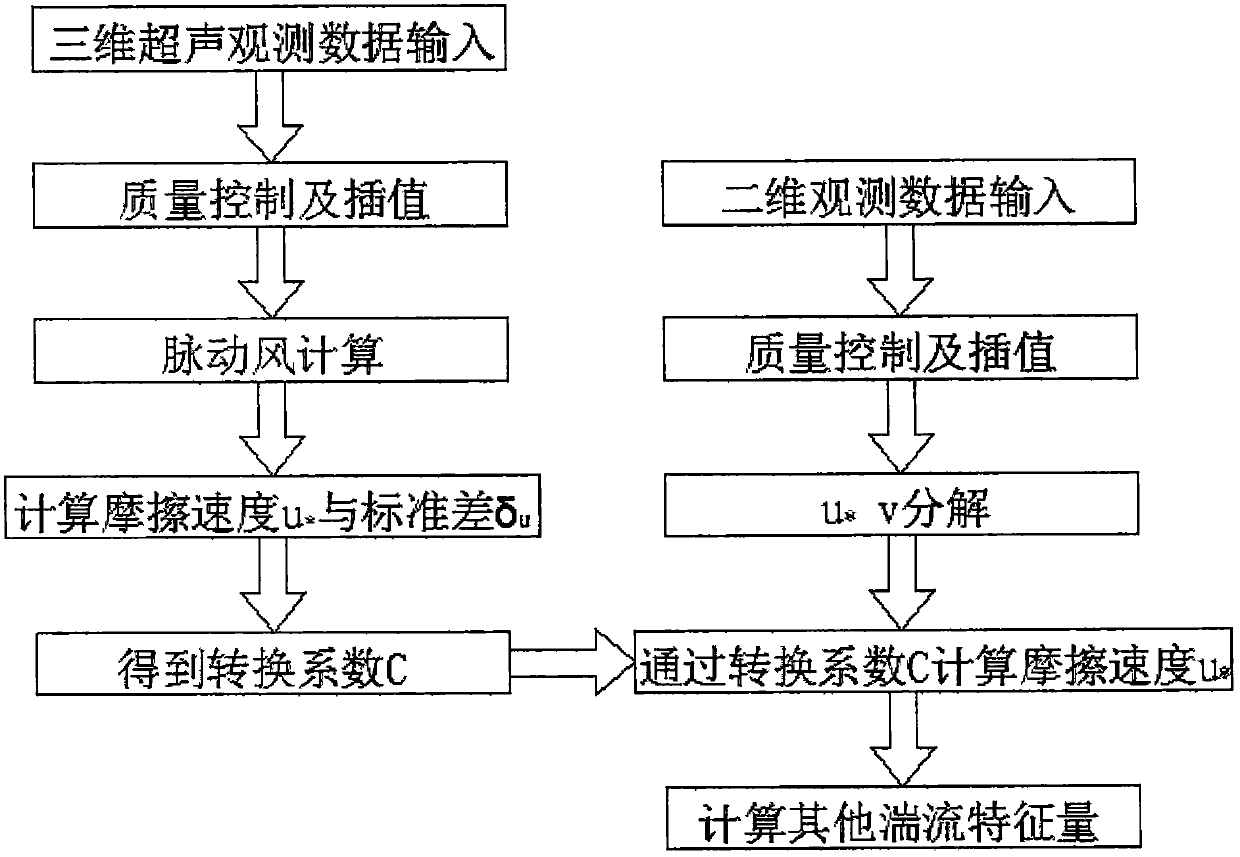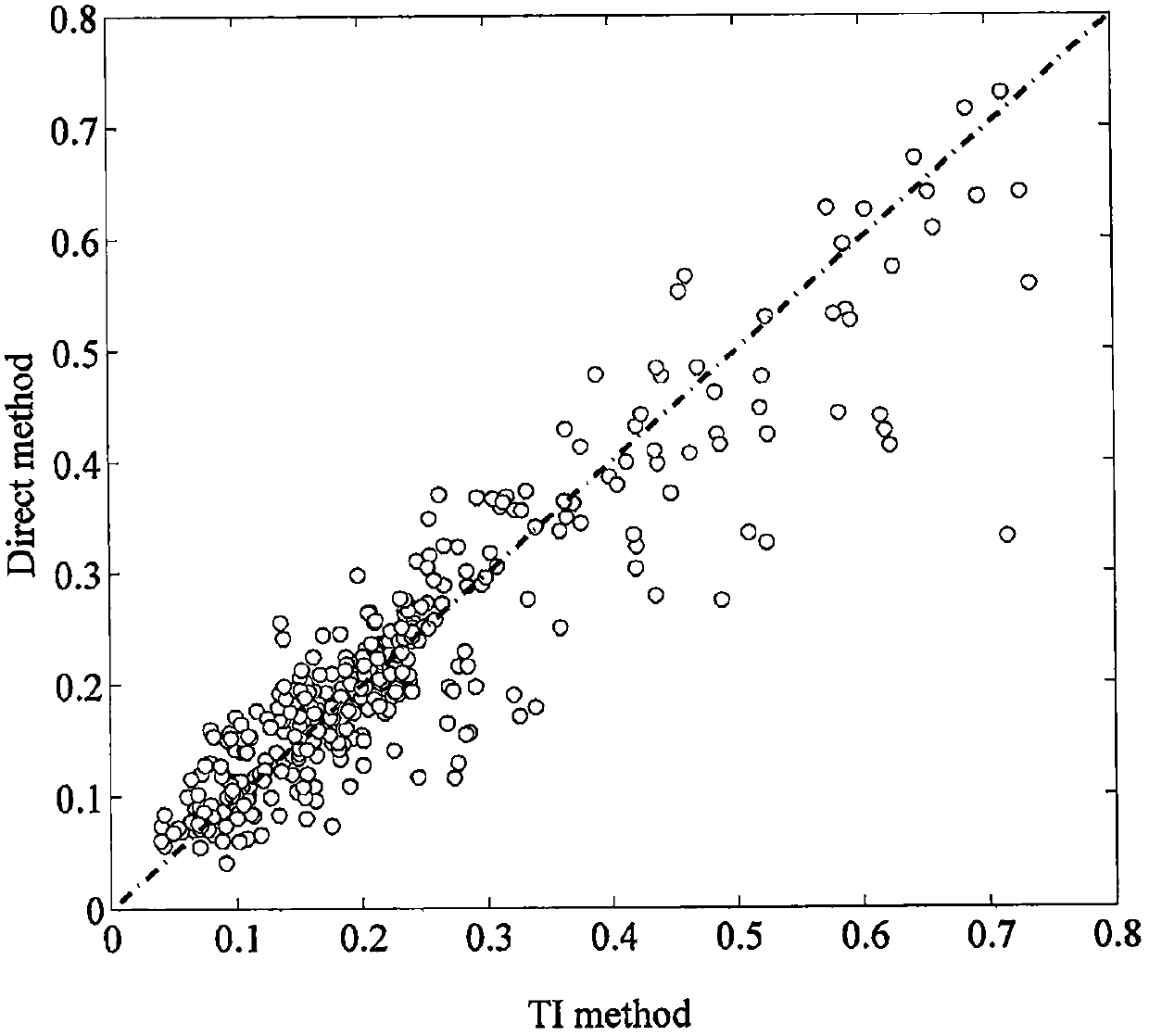A turbulence characteristic calculation method for near-stratum strong wind
A feature calculation, near-surface layer technology, applied in the direction of calculation, special data processing applications, instruments, etc., can solve the problem of lack of vertical velocity w and time resolution, and low temporal resolution in two-dimensional wind field data, so as to improve the quality monitoring level and data. Stability, effect of increasing the number of computable variables
- Summary
- Abstract
- Description
- Claims
- Application Information
AI Technical Summary
Problems solved by technology
Method used
Image
Examples
specific Embodiment approach
[0066] like figure 1 As shown, the calculation method of the turbulent characteristics of the near-surface gale includes the following steps:
[0067] (1) Preparatory work before the calculation of turbulence characteristics such as quality control, wind direction adjustment, and fluctuating wind calculation based on the original observation data of 10Hz three-dimensional ultrasonic wind speed;
[0068] Specifically include the following sub-steps:
[0069] (1) Perform quality control on the original data, and filter out wild points that appear in the original data due to unstable power supply pulses, unstable sensing elements, or other reasons based on the following formula:
[0070] |dx(i)|=3σ
[0071] Where x represents the time series of u, v and w, dx(i)=x(i+1)-x(i), and σ is the standard deviation of sequence x;
[0072] Then remove the wild points detected in the previous step, and interpolate with the following method:
[0073] x(i)=x(i-1)R m +(1-R m )X m
[00...
PUM
 Login to View More
Login to View More Abstract
Description
Claims
Application Information
 Login to View More
Login to View More - R&D
- Intellectual Property
- Life Sciences
- Materials
- Tech Scout
- Unparalleled Data Quality
- Higher Quality Content
- 60% Fewer Hallucinations
Browse by: Latest US Patents, China's latest patents, Technical Efficacy Thesaurus, Application Domain, Technology Topic, Popular Technical Reports.
© 2025 PatSnap. All rights reserved.Legal|Privacy policy|Modern Slavery Act Transparency Statement|Sitemap|About US| Contact US: help@patsnap.com



